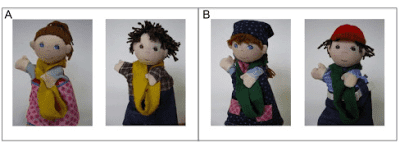Loyalty is a complex emotion, and paradoxical at times. For many loyalty is intrinsically link to identity, since our loyalty and allegiance to our nationality, families and friends or lack thereof defines us as persons. Psychologists have been studying the interplay of social injustice, righteous anger and group allegiance of many years (marketers especially love these kinds of studies). Loyal persons are seen by others as nicer and more trustworthy. But how early in life do we actually see group loyalty develop? As early as age four, a new research suggests.

Antonia Misch and colleagues from Yale’s Social Development Cognitive Lab enlisted 48 five-year-olds and 48 four-year-olds, each group with equal numbers of boys and girls. They then introduced each toddler to four cute hand-puppets. Later, yellow and green scarfs were pulled from a box which signified two different group allegiances. The child and two of the puppets were assigned as a team using one of the scarfs (yellow or green), while the rest of the two puppets were made to wear the other coloured scarf.
I won’t tell

Puppets used in the study. Figure from Misch et al
The child and researcher then had to leave the room, presumably to look for something. Upon their return, the two puppets from their team or — alternatively, depending on whether this scenario was in-group or out-group — two puppets wearing different scarfs, caught red-handed hiding a book. The hand-puppets told the child that he must not tell anyone about this. Mere minutes later, a fifth puppet wearing no scarf (no group affiliation) introduced itself telling the child that it knew there was a secret kept in this room. The puppet offered to bribe the child with a sticker.
Most children resisted the temptation, 61% overall whether the puppets keeping the secret were from their team or not. Key, however, was that the kids who were urged to keep the secret by puppets wearing the same scarf were much likelier to stay steadfast in front of the bribing neutral puppet, as opposed to when asked by the other team (75% vs 48%). In-group loyalty was distinctly present in both age groups, but more pronounced in five year olds; 71 per cent of five-year-olds kept the secret compared with 52 per cent of four-year-olds.
Of note is that these in-group loyalties form very, very fast. The children were introduced to their team puppets and allegiance in a process that took just a couple of minutes. The researchers expect that their real life in-group loyalties (family, peers) are much stronger.
Findings appeared in the Journal of experimental child psychology.






